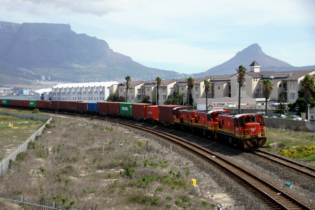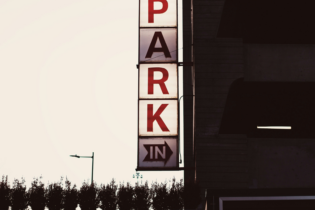Rail transport writer John Batwell reviews Zimbabwe’s strategic rail system in Southern Africa 31 years after independence.
Just over three decades ago, the fledgling Southern African independent state of Zimbabwe inherited from its ‘colonial masters’ one of the continent’s finest railway systems – once a vitally important, seamless and well-greased rail corridor contributory to the economic well-being of the whole region. Thirty years later, economic mismanagement of Zimbabwe by the ruling ZANU PF government has crippled its numerous parastatals, including the near-on 2 800 km National Railways of Zimbabwe (NRZ) systems.
In later years, the brain drain from the NRZ, compounded by strike action for foreign exchange remuneration owing to the collapsed local currency, prompted the pulling in of retired staff. The overt opulence of NRZ senior management driving brand new 4 x 4 vehicles also prompted industrial response. In a country that laid claim to being safe and rather crime free, the gap between the ‘haves’ and ‘have-nots’ has catapulted Zimbabwe into being a free-for-all society. The NRZ has not been spared this survival mindset. In 2011, at least US$750 million (approximatelyy R5.37 billion) is required to rebuild the NRZ, according to Ministry of Finance statistics, with US$59.9 million being required to remove speed restrictions, US$284 million to rehabilitate rail tracks, US$23.3 million to re-electrify the 307 km Dabuka-Harare section and US$83.9 million to purchase signalling and telecommunications equipment. The short, electrified section was a modern showpiece just four years after independence. The situation has deteriorated to the supporting masts being uprooted, in addition to the theft of the wiring. The electrified section, in which 360 km of copper cables were stolen, has consequently ended up returning to diesel traction, rendering the fleet of electric units useless. In December 2010, the NRZ reported that only one of an original fleet of 30 electric locomotives was operable.
The theft of phone lines along the system has created a return to paper-written instructions and also radio communication between train crews and centralised traffic control (CTC). The former Rhodesia Railways prided itself on having put CTC in place from as far back as the early 50s. In the past 10 years some horrific collisions have occurred, resulting in considerable human loss, a fact that the state-controlled media chose to play down. The system is reported to be working at between 30 and 50% of its capacity owing to the myriad challenges. The struggling parastatal has on more than one occasion failed to raise, via government, the monies to put in place desperately needed new motive power and rolling stock procurements. Seven years ago, a $US110.4 million deal with China for 10 locomotives, eight commuter train sets and 64 inter-city coaches came to nothing. Further orders for 29 passenger coaches, from Nanjing Puzhen Rolling Stock Company, and 14 diesel locomotives, have also been thwarted. The system’s oldest diesel-electric motive power type, although it was re-engined, now dates back to the mid-1960s, while elements of the passenger rolling stock date back to the 50s.
NRZ’s passenger services, both urban in the form of ‘the Freedom Trains’ linking the high-density suburbs with the main city centre in both Bulawayo and Harare and the inter-city services, were popular when the Zimbabwean currency was in free-fall. The train was cheapest! However, since the US dollar has become the standard currency following the abandonment of the hyper-inflated Zimbabwe dollar, commuters have returned to road transport as the taxi services are quicker and once again competitive fare-wise. The aged passenger train rolling stock has become dirty, smelly and dangerous owing to dark travel – carriage interiors are often not lit, making commuters feel vulnerable. Late running of the trains has also become an issue with patrons, as well as overcrowding when insufficient saloons are laid on. There has been a decline in goods carried to 3.7 million tonnes during 2010, from the 18 million tonnes shipped in 1998!
In December 2010, the NRZ’s corporate communications manager stated in the media that
China North Railway Company (CNRC) would only deliver an order for 14 diesel units on full payment of what is a $US29 million deal. The Government had raised a 10% deposit by year-end and in early 2011 was looking for a line of credit.
The World Bank was not shy of late to suggest that many parts of the rail system be shut down owing to their poor condition. In May, it was planned to start rehabilitating 144 km of the network. NRZ’s public relations manager, Fanuel Masikati, said material for the work had already been secured from China. He indicated that areas in need of repair included sections of rail along the Dabuka-Harare and Harare-Mutare routes. Masikati added that the NRZ had engaged a local firm to manufacture rail sleepers for the exercise. Not only is the railway important to the economic viability of Zimbabwe, but as stated earlier, the NRZ network is a major corridor for neighbouring states, such as Zambia and the Democratic Republic of Congo, and their life-line connection to South African ports. In March this year, the parastatal announced to the independent media that it was expecting cargo volumes to surge by 58% to 6.4 million tonnes this year – a slight upturn, particularly in minerals, would dictate this anticipated improvement. Time will tell if such traffic is actually moved.
The NRZ’s woes continue: in December, it was reported that Zimbabwean farmers have moved a step closer to seizing planes belonging to the troubled state carrier Air Zimbabwe and trains owned by the NRZ in their efforts to get compensation for farms seized by President Robert Mugabe – without any compensation – since 2000. In claims registered recently in New York, the farmers have now been empowered to attach planes, trains and any assets belonging to quasi-state corporations that they can identify outside of Zimbabwe’s borders.
Despite the gloom and doom, the NRZ still plays host to tour operators by running steam safaris in the southern and western parts of the country. These clients speak highly of the NRZ operating department’s efforts to put on a good spectacle against the very difficult odds at hand. The NRZ has recently embarked on a new business unit – marketing and running its own Rail Leisure ventures. That’s one thing: the Zimbabwean people have always had to be admired for their absolute gob-smacking resilience and ability to get stuck in and ‘make a plan’.
Sadly, the Zimbabwean government has dragged its heels in establishing PPPs to help revive its parastatals, not to mention the NRZ. A railway board dissolved back in 2008 was still involved in decision-making three years after its dissolution. Brigadier-general Douglas Nyikayaramba headed up the board, which has been under fire from NRZ workers who accuse it of failing to halt the collapse of the country’s sole rail transporter. The government is also under pressure to demilitarise parastatals in line with the new political dispensation. NRZ’s general manager is retired Air Force of Zimbabwe air commodore Mike Karakadzai. In late March, the Zimbabwean Cabinet approved two bills that provide the legal framework for the implementation of reforms and restructuring in troubled parastatals, such as the NRZ. One does hope that something far more tangible than simply cheap parliamentary banter and debate comes out of these bills, since Zimbabwe’s rail system is so pivotal to the seamless regional transport structure desired by rail managers on the ground and by politicians – in the latter’s case, hopefully not only rhetorically any longer!







